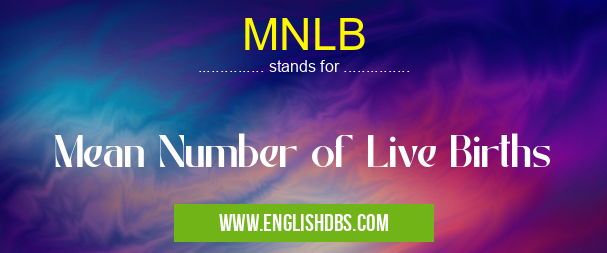What does MNLB mean in GOVERNMENTAL
MNLB stands for Mean Number of Live Births. It is a statistical measure used to quantify the average number of live births per woman in a given population over a specific period. It is a key indicator of fertility and reproductive health within a population.

MNLB meaning in Governmental in Governmental
MNLB mostly used in an acronym Governmental in Category Governmental that means Mean Number of Live Births
Shorthand: MNLB,
Full Form: Mean Number of Live Births
For more information of "Mean Number of Live Births", see the section below.
Calculation
To calculate MNLB, the total number of live births in a population is divided by the total number of women in that population. The resulting value represents the average number of live births per woman.
Factors Influencing MNLB
MNLB is influenced by various factors, including:
- Socioeconomic status: Women with higher levels of education and income tend to have lower MNLBs.
- Age: MNLB generally peaks during the childbearing years and declines with age.
- Access to healthcare: Women with access to reproductive healthcare services have lower MNLBs.
- Cultural norms: Cultural practices and beliefs can influence fertility rates and MNLB.
- Government policies: Government policies on family planning and reproductive health can impact MNLB.
Significance
MNLB is a valuable tool for policymakers, public health officials, and researchers to understand and monitor fertility patterns within a population. It can help identify trends and inform policies aimed at improving reproductive health and reducing maternal and child mortality.
Essential Questions and Answers on Mean Number of Live Births in "GOVERNMENTAL»GOVERNMENTAL"
What does MNLB stand for?
MNLB stands for Mean Number of Live Births. It is a measure of the average number of live births per woman of reproductive age (15-49 years) in a given population.
Final Words: MNLB is an important metric for measuring fertility and reproductive health in a population. By considering the factors that influence MNLB, policymakers and public health officials can develop targeted interventions to promote reproductive health and improve the well-being of women and children.
